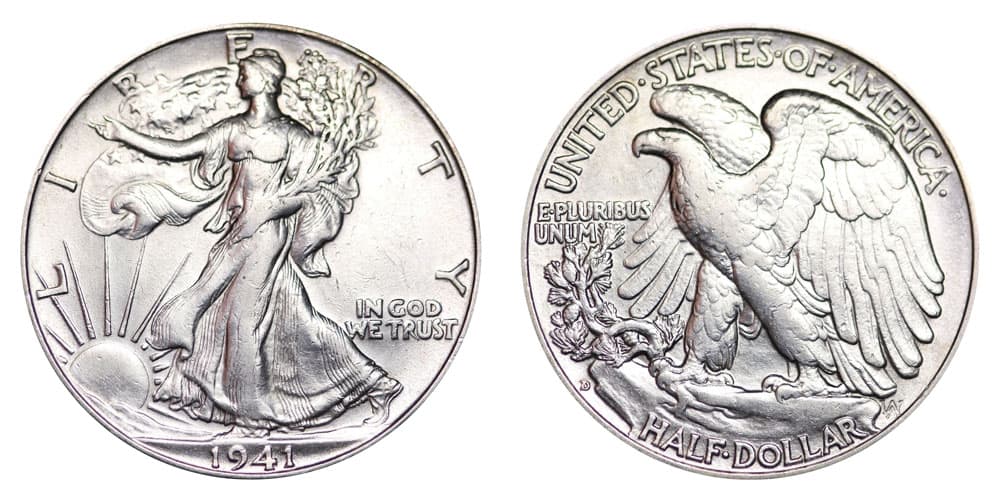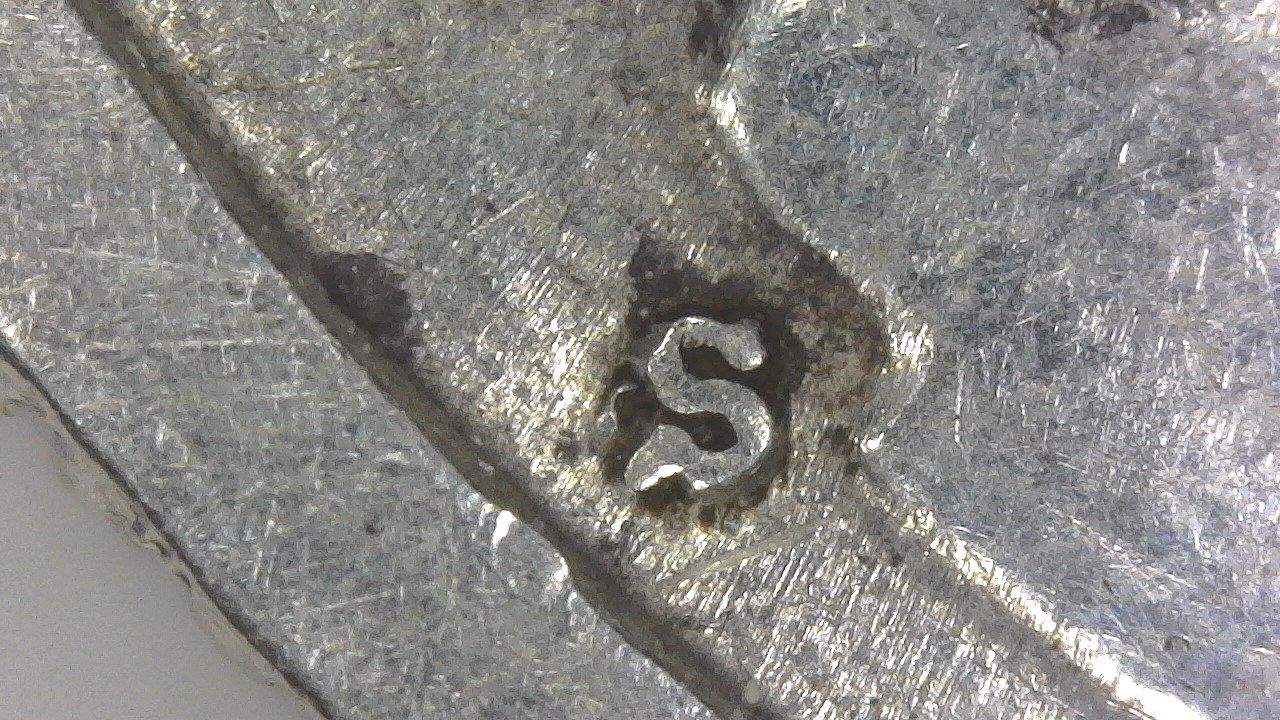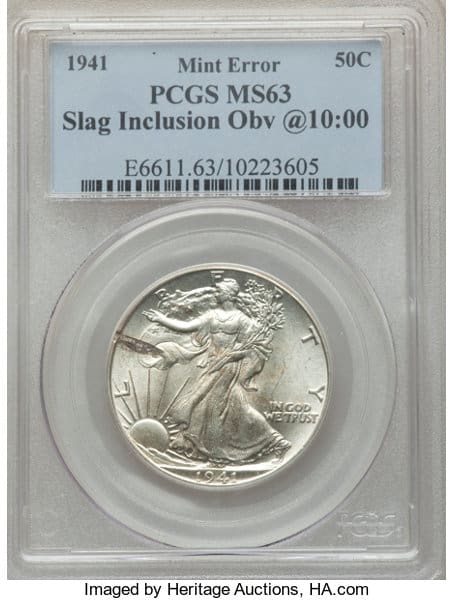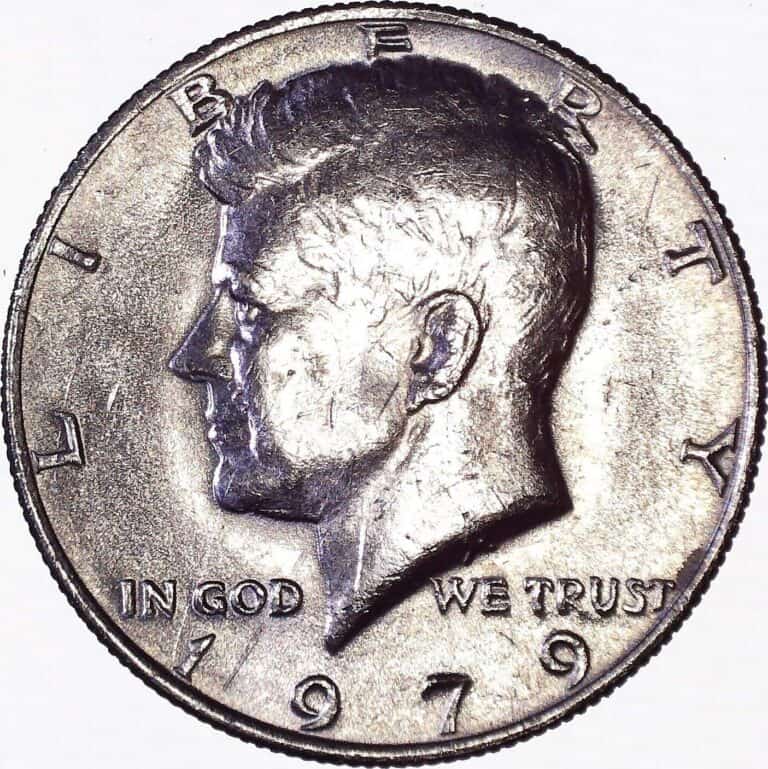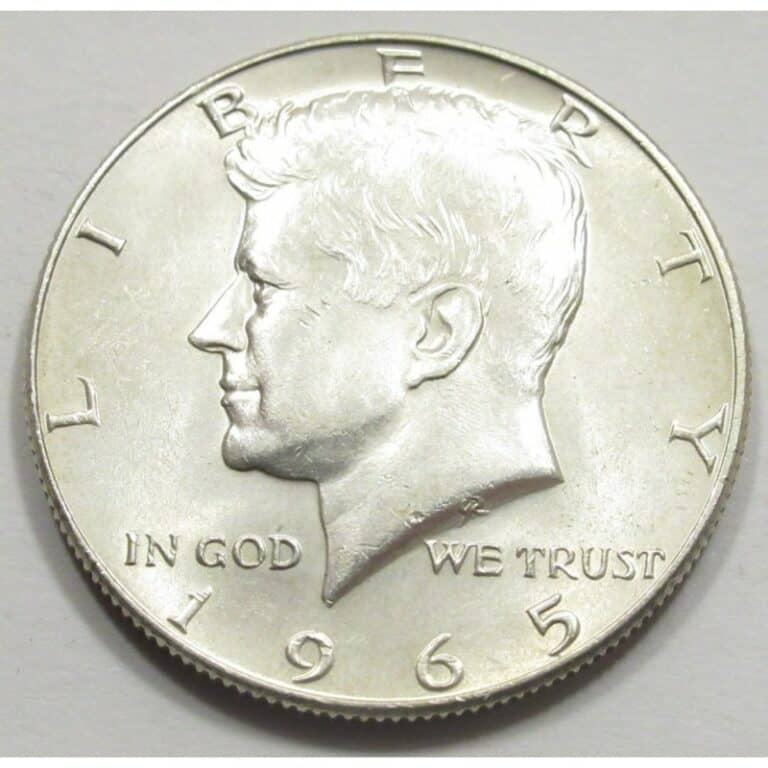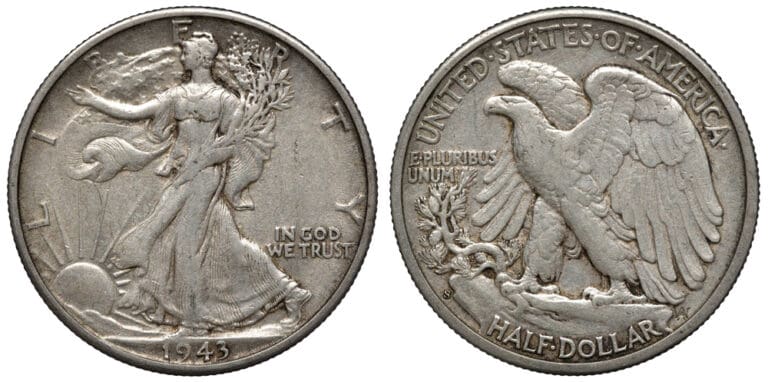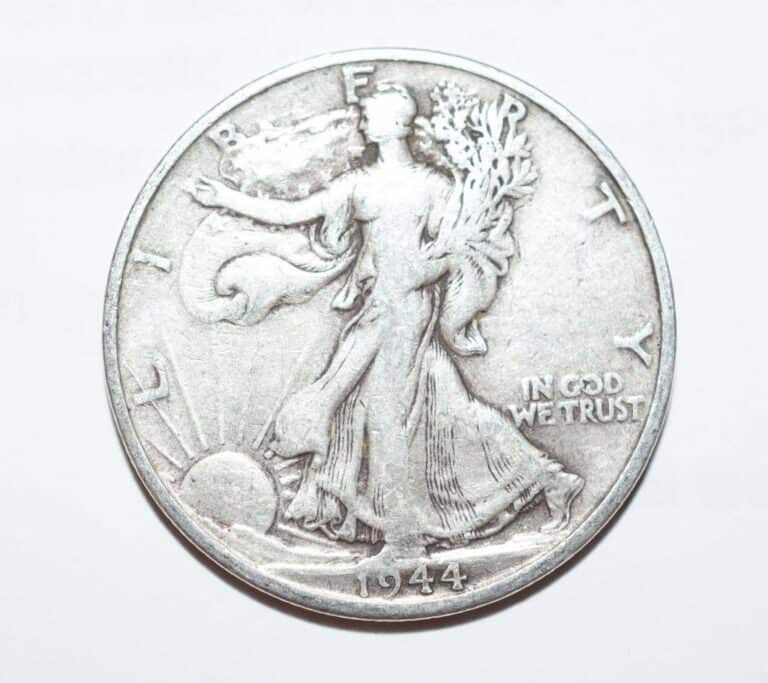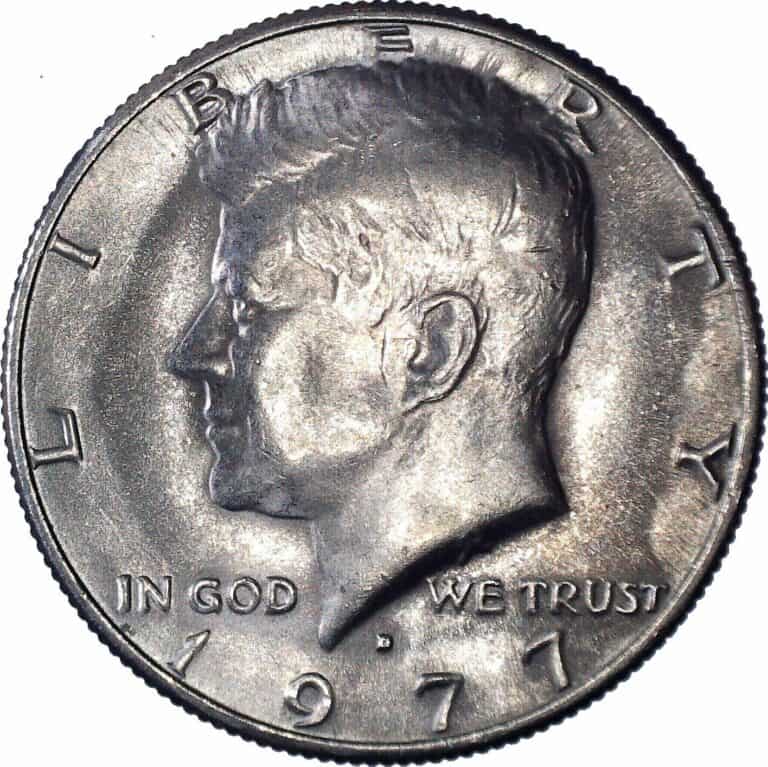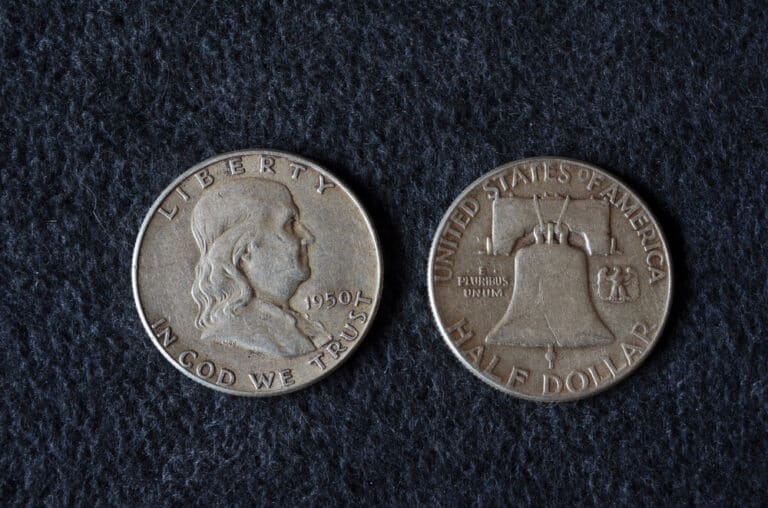1941 Half Dollar Value: How Much is it Worth Today?
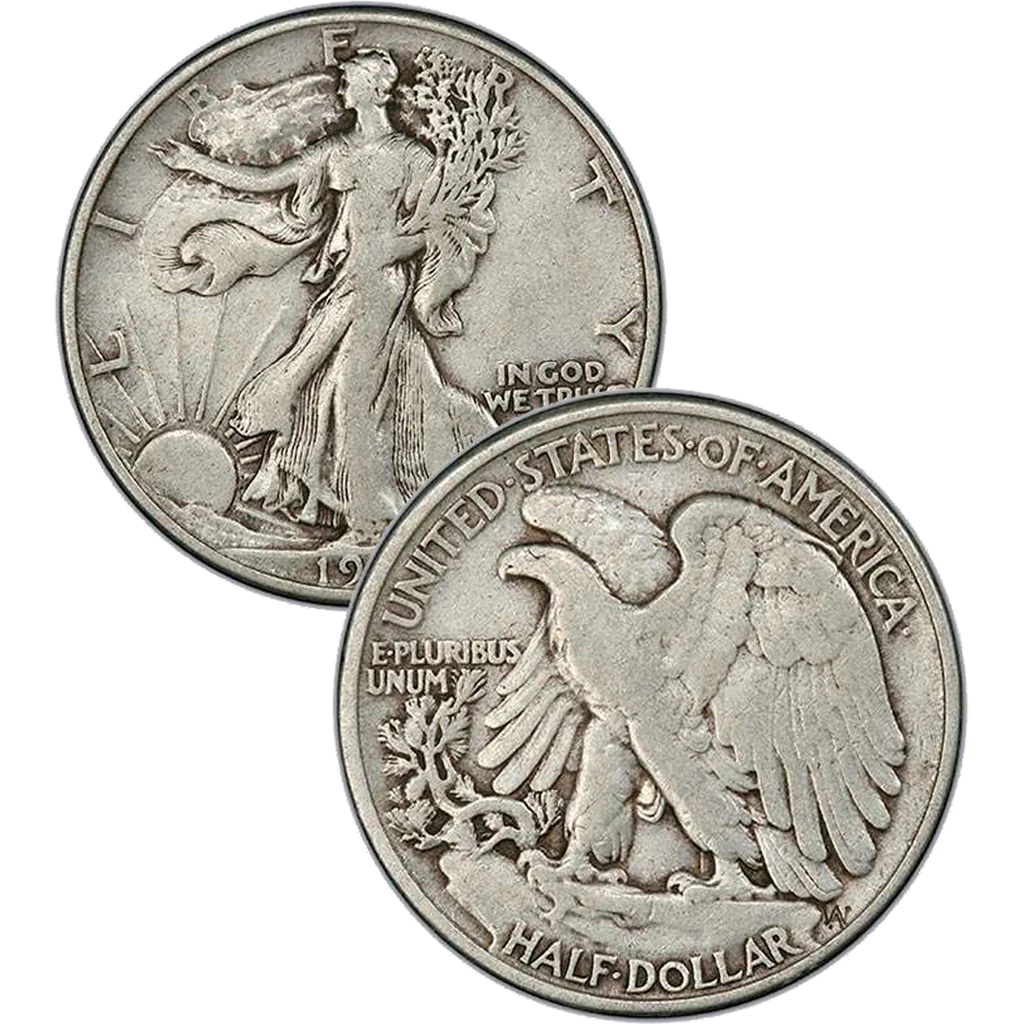
The Walking Liberty half dollar is one of the more poetic coin designs to appear in U.S. coinage. Endearingly referred to as “Walkers” by some coin collectors, this large-sized coin is a favorite, even among hobbyists who aren’t that much into numismatics.
This half dollar design ran every year from 1916 to 1947. But it’s always super interesting to see the value of these coins during wartime. So today, we want to give you the lowdown on the 1941 half dollar value specifically.
If you have a 1941 half dollar in your collection and are curious as to its value and rarity today, buckle up! We’re giving you everything you need to know about this beautiful, much-admired coin.
1941 Half Dollar Value Chart |
|||||
| Mint Mark | Extremely Fine | AU58 About Uncirculated | MS63 Select Uncirculated | MS66 Gem Uncirculated | MS67 Superb Gem Uncirculated |
| 1941 No Mint Mark Half Dollar Value | $18.50 | $30 | $55 | $170 | $425 |
| 1941 “D” Half Dollar Value | $18.50 | $45 | $80 | $200 | $700 |
| 1941 “S” Half Dollar Value | $18.50 | $50 | $120 | $900 | $15,000 |
1941 No Mint Mark Half Dollar Value
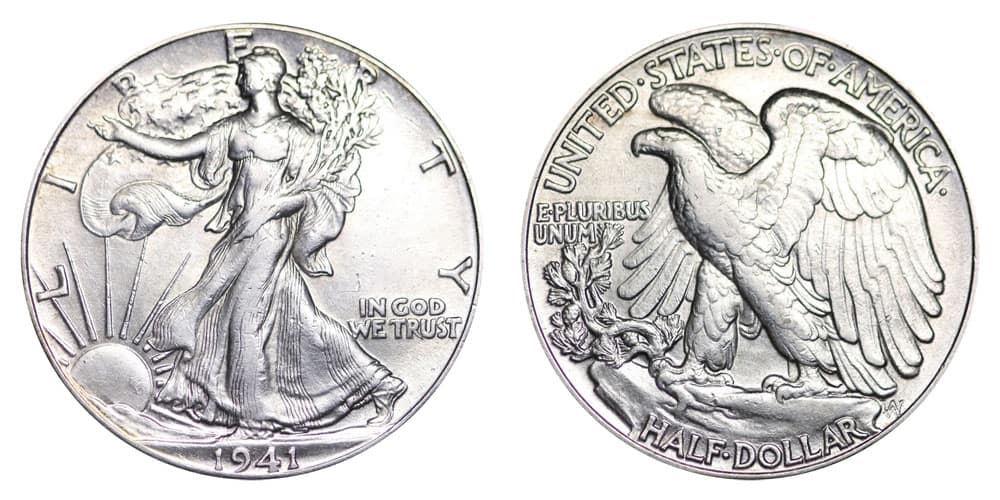
In 1915, Robert Woolley, the Director of the U.S. Mint, gathered three renowned New York City sculptors. Adolph Weinman, Albin Polasek, and Hermon MacNeil were all asked to participate in a little friendly competition.
This competition was a coin design contest that would give them a chance to design one or more of the newest U.S. silver coins expected to be produced the following year.
In the end, the brilliant Weinman ended up winning two of the coveted coins. One was what would later be known as the Mercury Dime. The other was the magnificent Walking Liberty half dollar.
Weinman’s half dollar design was nothing short of artistic and utterly captivating. On the obverse, we see the head-to-toe figure of Miss Liberty bravely walking toward the rising sun. She is clad in stripes and a cape of stars. She’s holding laurel and oak branches to symbolize power and peace.
On the upper rim of the obverse is the word “LIBERTY.” On Miss Liberty’s right is the phrase “In God We Trust.” Meanwhile, the date 1941 is on the bottom of the coin.
This was a very patriotic image that was fitting for the times. See, just a year after this coin was produced for the first time, America declared war on Austria-Hungary in 1917, marking its entry into World War I. The Walking Liberty was a perfect depiction of the nation’s military prowess then.
The reverse is no less majestic. We see an American eagle with its wings spread perched on a cliff, where a pine sapling is starting to grow and sprout. “United States of America” is written above the eagle, while the denomination “Half Dollar” is seen below it.
The Latin credo “E pluribus unum” is seen right above the pine sapling. On the bottom of the sapling, you should see a mint mark for the “D” and “S” coins. As for the (P) half dollar, there is no mint mark. And on the right side of the mountain crag, you’ll notice an “AW” symbol, which honors the designer, Adolph Weinman.
In 1941, the Philadelphia Mint struck almost 25 million Walking Liberty half dollars. It was the highest mintage the series had seen thus far.
This comes as no surprise to coin collectors who know that mintage usually sees an uptick during wartime. It seems like the Treasury had the foresight to mint coins in higher numbers in preparation for the series of events that would lead to the U.S. joining World War 2 at the tail end of 1941.
1941 (P) half dollars are valuable today even in worn condition. In circulated conditions, these coins can be sold for anywhere between $11.50 to $30, depending on how heavy the wear is.
There were plenty of well-struck 1941 (P) half dollars. Some remained so brilliant and lustrous that the issue is readily available even today in higher mint-state grades.
In these mint, uncirculated grades, the Philly-minted half dollar is most common between MS64 and MS66. These coins are now worth between $70 to $170 today.
The numbers drop quite fast in MS67 and above, but these gems still exist and are highly valuable today. An MS67 would cost $425, but with a slightly finer grade at MS67+, you could sell your coin for over $1,000. And at an almost perfect MS68+, it can cost a whopping $11,750.
1941 D Half Dollar Value
In 1941, the Denver Mint started production of the Walking Liberty half dollar again after a short hiatus for the 1940 issue.
When it came back for its run in 1941, it produced more than double the number of coins it did in 1939—another sign that America was ready for its entry to the war. The total mintage was over 11 million coins.
Many 1941 D half dollars show signs of die erosion, but a lot of the coins were well-struck. This is very special because the Walking Liberty design is known for weak strikes. If you’re looking for a 1941 half dollar with excellent luster, keep an eye out for a Denver-minted one.
1941 D half dollars are easy to find across all grades, even mint-state, uncirculated ones. Even superb gems in grades MS67 and above are plentiful enough to meet demand from serious collectors, which is a good sign as to how many of these coins still exist today.
In extremely fine, circulated condition, the 1941 D half dollar is valued at around $18.50, like the Philly-minted coins. But they’re a bit more expensive in about uncirculated AU58 condition at $45.
Of course, the value of these coins gets higher in mint-state quality. They’re most commonly found in grades MS64 and MS65, which put them at values of $110 and $130, respectively. There are also a lot of MS66-grade 1941 D half dollars out there. These are worth $200 today.
The most impressive prices for the 1941 D half dollar come up for coins with the finest grades—ones that are almost perfect. For example, an MS67+ coin can sell today for $2,750.
Meanwhile, a brilliant, frosted MS68 can be valued at $16,000. One of these coins even sold for almost $29,000 in early 2023.
1941 S Half Dollar Value
Like the Denver Mint, the San Francisco Mint outdid its previous run of the half dollar. It created over 8 million 1941 Walking Liberty halves—almost half of the amount it produced in the previous year.
The Frisco-minted half dollars were known for their soft, weak strikes. As a result, the design of many of these coins looks somewhat incomplete. Due to this, it can be challenging to look for a well-struck 1941 S half dollar with bold, distinctive lines that give justice to Weinman’s design.
Surprisingly, the San Francisco coins of the 1941 half dollar run are the most valuable of the three varieties, thanks to their rarity and low mintage compared to the Philly and Denver Mints.
That said, many of the 1941 S half dollars are known to come from over-polished dies, creating coins that are proof-like in brilliance.
In extremely fine condition, the 1941 S half dollar is priced the same as the (P) and D equivalent at $18.50. However, it shows to be more expensive at AU58, which is valued today at $50.
Because there were so many weak strikes in this issue, mint-state 1941 S half dollars are most common in the lower uncirculated grades, namely MS63 and MS64. “S” coins with these grades can be sold today for about $120 and $195, respectively.
There is also a sizable amount of MS66 coins available, which can be sold today for around $900 apiece. However, the number of coins drops quickly past that grade, making superb gems incredibly rare for the San Francisco issue of the 1941 half dollar.
Seeing an MS67 gem is likely very difficult for this issue. But if you do happen to stumble upon one, you can sell it for upwards of $15,000. One such coin even sold in 2021 for over double that amount!
1941 Half Dollar Grading
Grading Walking Liberty halves can be a difficult time for newbies. You’ll need to look for wear on the highest points of the coin and check for how bold the lines are on your coin compared to uncirculated models. It’s especially tricky to do that since the coins are notorious for weak strikes.
The rule of thumb is simple, though. Your coin is circulated and might be worth less than $50 if it has heavy wear, smoothness, and little to no luster and shine. Your coin is uncirculated if it’s shiny, lustrous, has no contact marks, and have bold strikes. These coins will be more valuable.
Confused about how to grade your 1941 Walking Liberty half dollars? Watch this video to see what grade your coin will likely fall under:
Rare 1941 Half Dollar Error List
Here’s a quick list of mint errors on 1941 half dollars that are worth any curious collector’s time and interest.
1941 Half Dollar Repunched Mint Mark (RPM) Error
Pull out your coin microscope and check your D and S 1941 half dollars to see if the mint mark has been repunched. A coin with this error will look like its tiny mint mark was stamped twice, one over the other, creating an overlap in the letter.
However, just because a coin has a repunched mint mark doesn’t mean it’s ultra-valuable. It still depends highly on the grade. For example, an AU55 1941 D half dollar with this error once sold for just $60. An MS66 coin, on the other hand, can sell for over $700.
1941 Half Dollar Struck on 25C Planchet Error
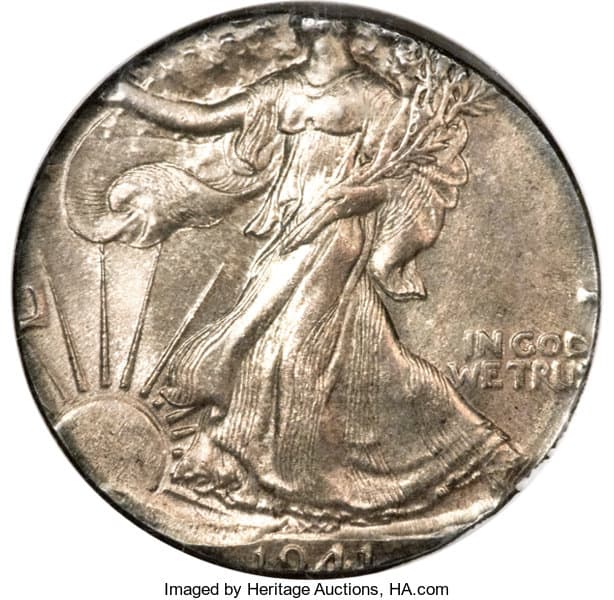
A 1941 half dollar has also been found struck on the wrong planchet—specifically the much smaller 25-cent planchet. The design looks cut off all around the rim of the coin, giving it a peculiar look. Most of the letters are at least legible on the coin, but the word “LIBERTY” cannot be seen.
At a grade of MS64, this 1941 half dollar ended up selling for a whopping $18,000.
1941 Half Dollar No AW Initials Error

You should be able to see Adolph Weinman’s initials “AW” to the right of the mountain cliff of the half dollar’s obverse. In some of the 1941 proof half dollars, this symbol is nowhere to be found. It is said that this was because the symbol was polished off of the die used to mint those coins.
A PF69 1941 half dollar with no “AW” initials has been known to sell for over $18,000 as well.
1941 Half Dollar Slag Inclusion Error
Planchets, aka blank coins, are made from metal sheets of molten alloy. Sometimes, unwanted contaminants find their way into these sheets, leaving behind some slags even before a coin is shaped and stamped with its design.
A 1941 half dollar has been found to have one of these slag inclusions on its obverse. You can see it at around the ten o’clock area, just to the left of Miss Liberty. This MS63 coin sold for over $250.
1941 Half Dollar FAQs
Is a 1941 half dollar pure silver?
Yes, the 1941 half dollar has a very high fineness of pure silver in its composition. These coins are made with 90% silver and 10% copper.
Where is the mint mark on 1941 half dollar?
The Philadelphia-minted 1941 half dollars weren’t stamped with mint marks, so you won’t be able to find a mark on those coins.
But if you have a 1941 half dollar produced in Denver or San Francisco, you’ll see either a “D” or “S” mint mark on the reverse. It should sit to the left of the mountain cliff where the eagle is perched, right under the pine sapling.
Are coins from 1941 worth anything?
Yes, there is plenty of U.S. coinage minted in 1941 that is worth big bucks now. For the 1941 half dollar, you’ll find that coins with rare mint errors and a very high mint-state grade will be worth thousands of dollars. For example, an MS67+ 1941 S half dollar is worth $35,000 today.
